The Nimslo 3D Camera is Still the Best 3D Film Camera
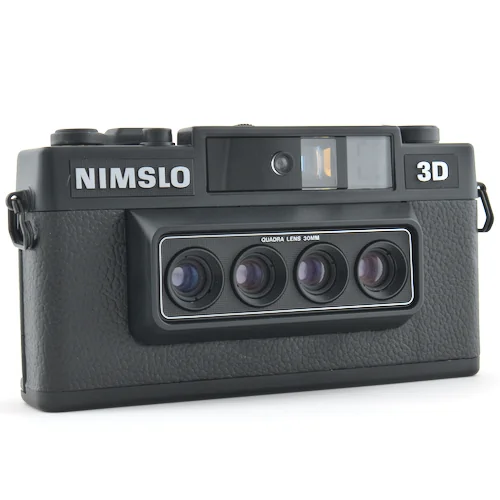
The Nimslo 3D camera is the original quadra lens camera. The design was to allow for the creation of lenticular prints from 35mm film.
A lenticular print would combine the four different images into a single print. That print would appear 3 dimensional when moved.
The Nishika N8000 and Nishika N9000 both have four lenses. They were released after the Nimslo 3D.
I am not aware of printers that can produce lenticular prints for individuals. The Nimslo and other cameras like it can still be used to create “3D” animated Gifs.
Price & Where to Buy
For a few years Nimslo camera prices were steadily increasing. Now that the fad has passed, demand has lessened and it is easier to get a good deal on a camera in excellent condition. Check around to find the best current prices.
On eBay use the “Sold Items” filter to see what the market price of the Nimslo 3D is based on what cameras have actually been selling for. The best deals sell the fastest, so current market prices might not reflect what you can get with some patience.
Affiliate Advertising Disclosure
Outside the Shot is a participant in the Amazon Services LLC Associates Program, an affiliate advertising program designed to provide a means for sites to earn advertising fees by advertising and linking to Amazon.com.
As an eBay Partner, I may be compensated if you make a purchase. I also participate in affiliate advertising programs with KEH and Adorama. More can be found on the Affiliate Discolsure page.
See current price and more information on:
Battery - 3x LR43 (386/301, AG12)
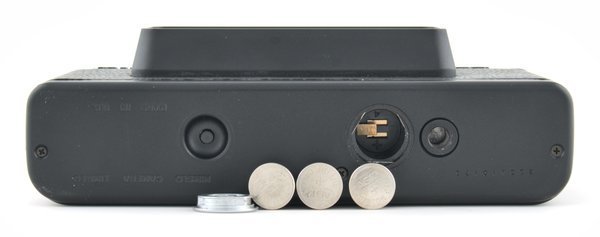
The Nimslo 3D camera was designed to use silver oxide batteries, but alkaline button cells such as 3x LR43 batteries can be used. These are also known as 386/301, and AG12 batteries.
Batteries are needed in order for the Nimslo’s shutter to fire.
A red or green LED should be visible in the viewfinder when the shutter button is half depressed. If a light does not appear, the batteries need to be replaced.
LR43 batteries are hard to find in stores. If you can find them, they’ll be expensive.
Buying eBay will allow you to get more batteries for less money. You’ll want at least 6 so you have a spare set to keep with you.
Take precautions when storing the camera as any pressure on the shutter button will cause the battery to drain. Just shoving the Nimslo in a bag may result in a position that will cause the batteries to drain.
Nimslo History
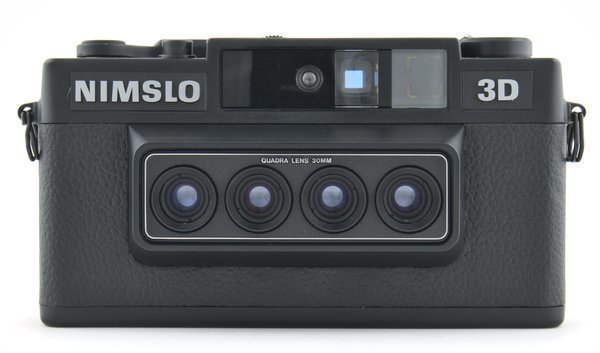
Dr. Jerry Curtis Nims and Allen Kwok Wah Lo invented the Nims/Lo camera. Released in 1982 by the Nimslo Corp, the original price was $259.00.
They created the lenticular printing process that made the three dimensional prints possible.
There are 2 different models, the first, made in the U.K. and the second made in Japan. According to The Nimslo Guy on YouTube, less than 10,000 UK models were produced.
In addition to selling the cameras, Reel 3-D Enterprises’ also handled making the lenticular prints. Unfortunately, demand was no high enough to keep the company financially healthy. In 1986, the production of the Nimslo camera stopped.
Nissei Corp. ended up taking over the printing business. Shortly after that, the design rights to the camera were sold. Those would be used to create the Nishika N8000 and Nishika N9000.
Shutter Speeds & Aperture
The Nimslo 3D can only be used with automatic exposure. Though there are some tricks you can try below to have more control over settings opening up the option to use different film.
Shutter speeds are automatically set from 1/30 to 1/500 of a second with an aperture from f/5.6 to f/22. When a flash is used in the hot shoe of the Nimslo, the lens aperture will always be set to f/5.6.
The shutter and aperture are locked together as they operate in tandem. This means the camera has 5 different settings it can take a picture with:
- f/5.6 - 1/30 sec.
- f/8 - 1/60 sec.
- f/11 - 1/125 sec.
- f/16 - 1/250 sec.
- f/22 - 1/500 sec.
The shutter release button has threading so that a remote release cable or timer can be used to trigger the camera.
The Nimslo Opti-Lite electronic flash has a pins to communicate with the camera. A green LED indicates when the flash is ready.
Using any other center pin fire flash with the Nimslo will still work, but the green LED light will not show up. Instead, a red light will appear in the Nimslo viewfinder.
If you already have a flash, go ahead and use it. The Opti-lite flash does not have a fast recycle time. Their age also makes them prone to dying as electrical components fail.
The Nimslo 3D has four spaced triplet lenses are made with glass elements. The glass lenses will produce sharper images than plastic lenses found in other 3D film cameras.
Tricks to Control Settings
There are several tricks you can use in order to gain some manual control over the Nimslo. The Nishika versions can’t do these.
- Covering the light meter will cause the camera to shoot at 1/30 of a second shutter speed and f/5.6 aperture.
- Shining a light into the light meter will have the camera shoot at 1/500 of a second shutter speed and f/22 aperture.
- Bulb mode can be achieved by reversing the polarity of the batteries in the camera.
Nimslo 3D Manual
A PDF scan of the Nimslo 3D instruction manual (20 pages)and Reel 3-D Enterprises’ Guide to the Nimslo 3D Camera (64 pages) books are available.
The Reel 3D Enterprises’ Guide is a book worth downloading a copy of. Included are advanced usage tips and the factory service manual.
The Nimslo Guy on YouTube has made several videos on repairing the camera. You can see the Nimslo teardown below:
At 41:15 in the video he goes over the shutter and aperture design on the Nimslo. You can see how the shutter works and why the settings are locked together.
Setting ASA, ISO
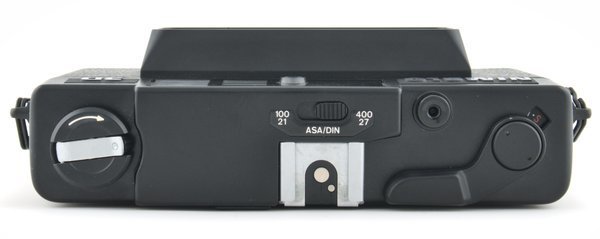
The Nimslo 3D has settings for two different film speeds, ISO 100 or 400. A way to get around the limited ISO settings is to use an ND filter over the Nimslo’s metering sensor.
A one-stop ND filter would allow the use of ISO 50 and ISO 200 film.
You can also use 200 or 800 ISO and select 100 or 400 to overexpose the film by 1 stop.
Film Frame Size
For every press of the shutter button, four half frame 22mm x 18mm pictures are taken. The four images cover 2 standard 35mm frames.
Using a roll of 36 exposure film in the Nimslo will produce 18 sets of images. A 24 exposure roll of film will make 12 sets of images and a roll of 12 exposures will result in 6 sets of pictures.
Stereo cameras (two lenses) often produce each image on a standard 35mm frame. The 3 dimensional effect is then seen by using a viewer that shows one of the pictures to each eye.
Best Film to Use
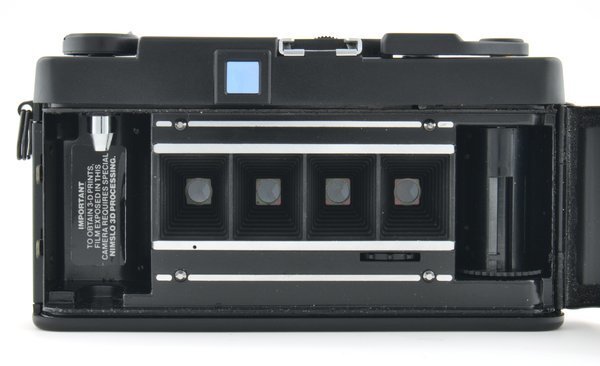
Don’t expect to get great results with your first couple of rolls of film you put through the Nimslo 3D. Due to the distance of the furthest lens to the viewfinder, the parallax effect takes some practice to get used to.
You may want to use cheaper film until you get the hang of using the camera. Flash photography is also a good way to ensure you get the best pictures.
Kentmere 400 is an example of a low priced black and white film you can use.
Developing film from the Nimslo should be the same as any other camera. The only exception being that if you send it off to a lab, ask them not to cut the negatives. The spacing will be different than with a camera that only takes single frames. This will avoid the risk of a photo being cut into two pieces.
Viewfinder & Metering
A red dot will show up in the Nimslo’s viewfinder if the conditions are not bright enough to take a picture.
A green dot will show up if the camera is reading that the exposure will be correct. That doesn’t mean your pictures will come out perfect, because the camera is not very accurate.
Due to the very basic light metering of the Nimslo camera, backlit scenes are likely to cause exposure problems.
If you’re interested in getting the best results from the Nimslo, or any 3D camera, use an incident light meter. My choice would be the Minolta Auto Meter VF.
With a flash meter, you’ll get more accurate readings. From there, you can focus on modifying the light to get the results you want.
Lenses
The four lenses on the Nimslo have a 30mm focal length with a maximum aperture of f/5.6. The field of view is similar to what you would experience with either of the Nishika cameras.
Each lens is a triplet (3 elements) design and they use glass lens elements. This is nice because less expensive 3D cameras use four plastic lenses.
The four lenses do not move. Since each lens is fixed in place, the focus is fixed at 6 feet to infinity.
3D Photo Gifs
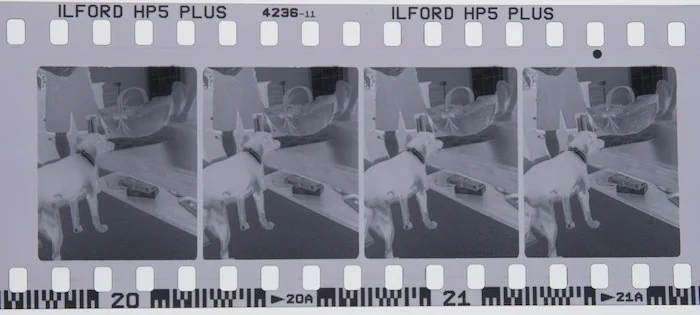
Originally, the film would have been mailed off to be developed and a lenticular printer would have been used to create 3D lenticular prints. The result would be 3D images that would not need 3D glasses to view. Negative film would have had to be used as the process was not setup to use slide film.
As far as I am aware, there are no longer any businesses that are able to produce lenticular 3D prints from 35mm film negatives.
Nimslo 3D camera photos can be scanned or digitized and then turned into animated 3D gifs.
Creating 3D gifs can be done by using an image editor, such as GIMP, to align and animate the picture frames.
Accessories
Nimslo Opti-Lite Dual Flash
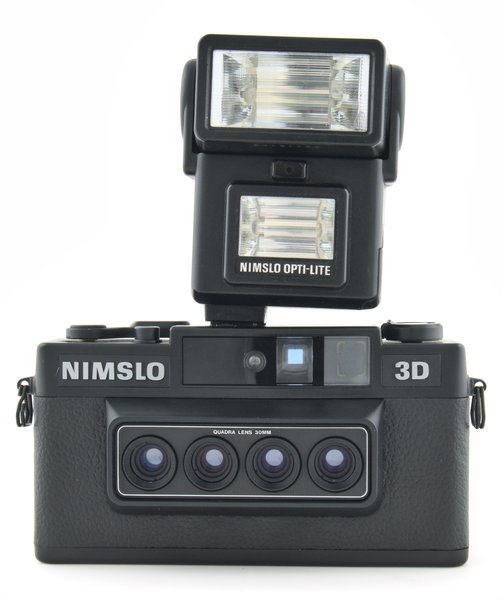
For indoor shooting, the top flash can be rotated to act as a bounce light for fill. The bottom flash facing forward will act as a key light to illuminate the subject. The two sources of light are helpful for getting pictures that will have the 3-dimensional look.
Flashes don’t age well. The electronics in them don’t work as well as they did when new. Advancements in electronics also mean that new flashes have noticeably faster recycle. Your photography experience will be better with a newer flash.
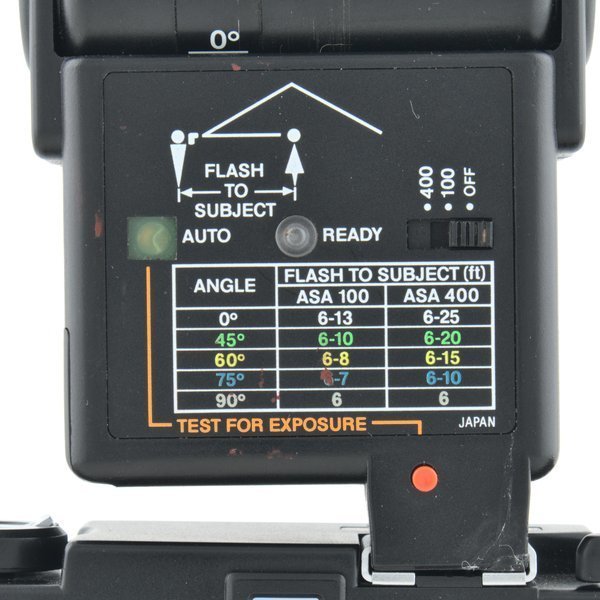
Like the camera, the flash is plastic. Be careful because giving the camera and flash to your 5-year-old niece can result in the flash shoe mount breaking.
Nimslo Opti-Lite flashes are perpetually going up in value.
- Early 2019 - $50
- Late 2019 - $100
- October 2020 - Zero market availability
I wish I knew where prices were going, but I don’t. Your best bet is to check the current prices on eBay to see if you can find a deal.
Camera Case
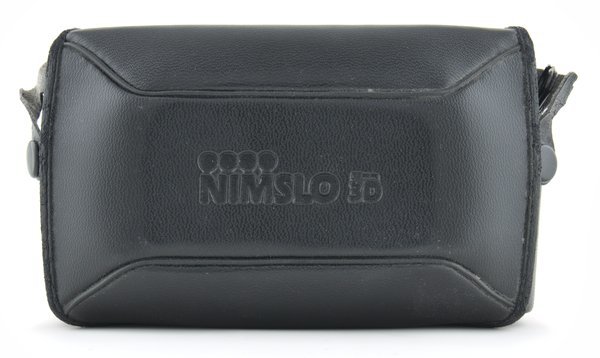
If the neck strap wasn’t enough for you, the Nimslo 3D camera was sold with a vinyl two part case. They are getting old enough to where the vinyl can start to peel from the backing fabric.
Poor storage conditions will make the degradation of the vinyl worse.
A case in poor condition likely means the camera was not stored in a temperature-controlled environment. Passing it up could help you to avoid future problems.
Nimslo 3D Alternatives
Nishika N8000 & N9000
These are the two cameras that have the most in common with the Nimslo.
The Nishika N8000 is unnecessarily large with a fixed shutter speed. It is billed as being a Quadra Lens camera, and is likely the most well known 4 lens camera.
The Nishika N9000 is smaller than the N8000, and similar in size to the Nimslo.
Minitech Quadralens
The Minitech is difficult to find. It is a clone of the Nishika N9000.
It is the only other camera I have seen with 4 lenses. The build quality is what you’d expect from a toy camera.
The only ones I’ve ever seen for sale on eBay have been for $250+.
ImageTech 3D Camera
There are at least 4 different camera models. One of which is the ImageTech 3D Wizard. Some of the cameras have different brandings, such as the Kalimar 3D stereo camera. All the models have 3 lenses and a toy camera build quality. You can generally find one for around $70 or less on eBay.
Holga 3D Camera
The Holga 3D is a stereoscopic camera, meaning it only has 2 lenses. Unless you want the Lomography look, the image quality will be low. It also won’t make animated gifs as good as the Nimslo or a Nishika.
On the plus side, it came with a viewer to use with the stereoscopic pictures it takes. By using slide film, the pair of developed stereo slides will create 3D pictures when used with the viewer.
There are two versions of this camera:
- Holga 135PC-3D - Uses 35mm film
- Holga 120PC-3D - Uses 120 film